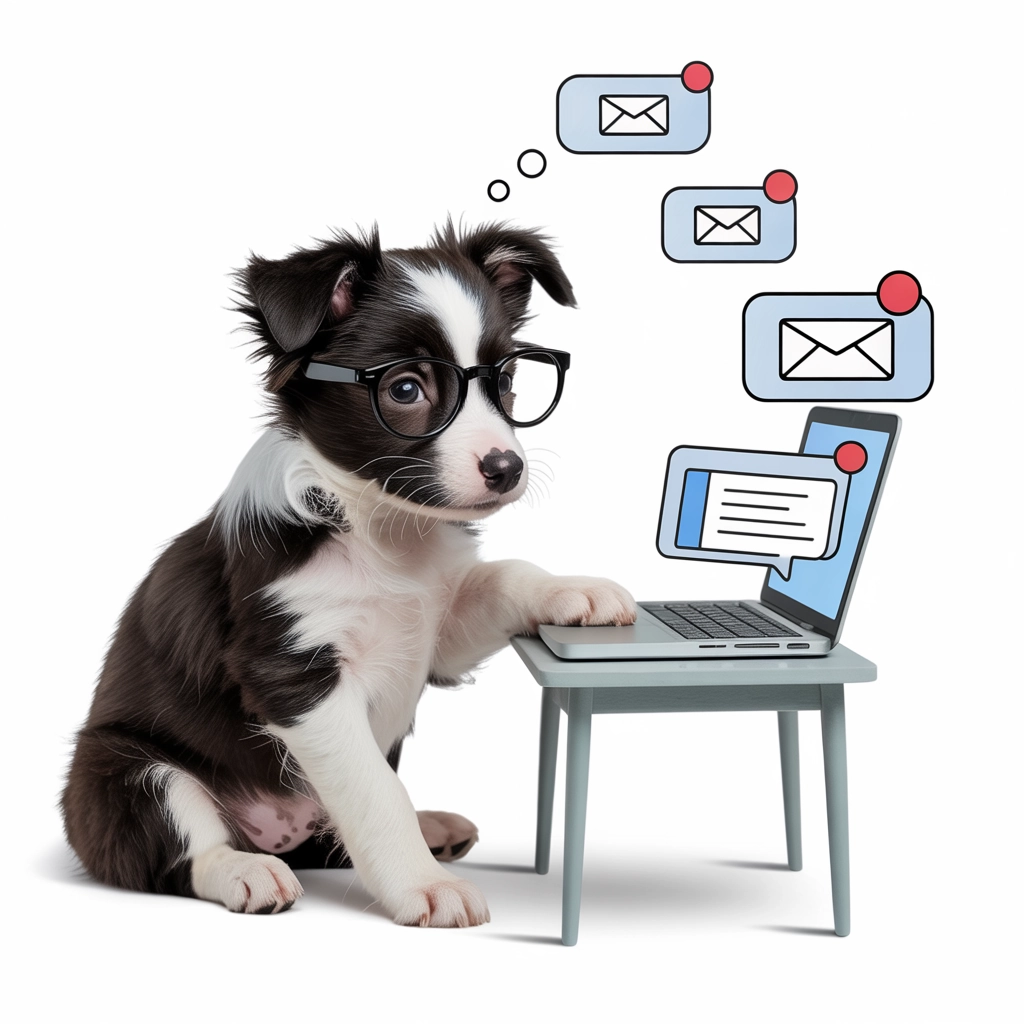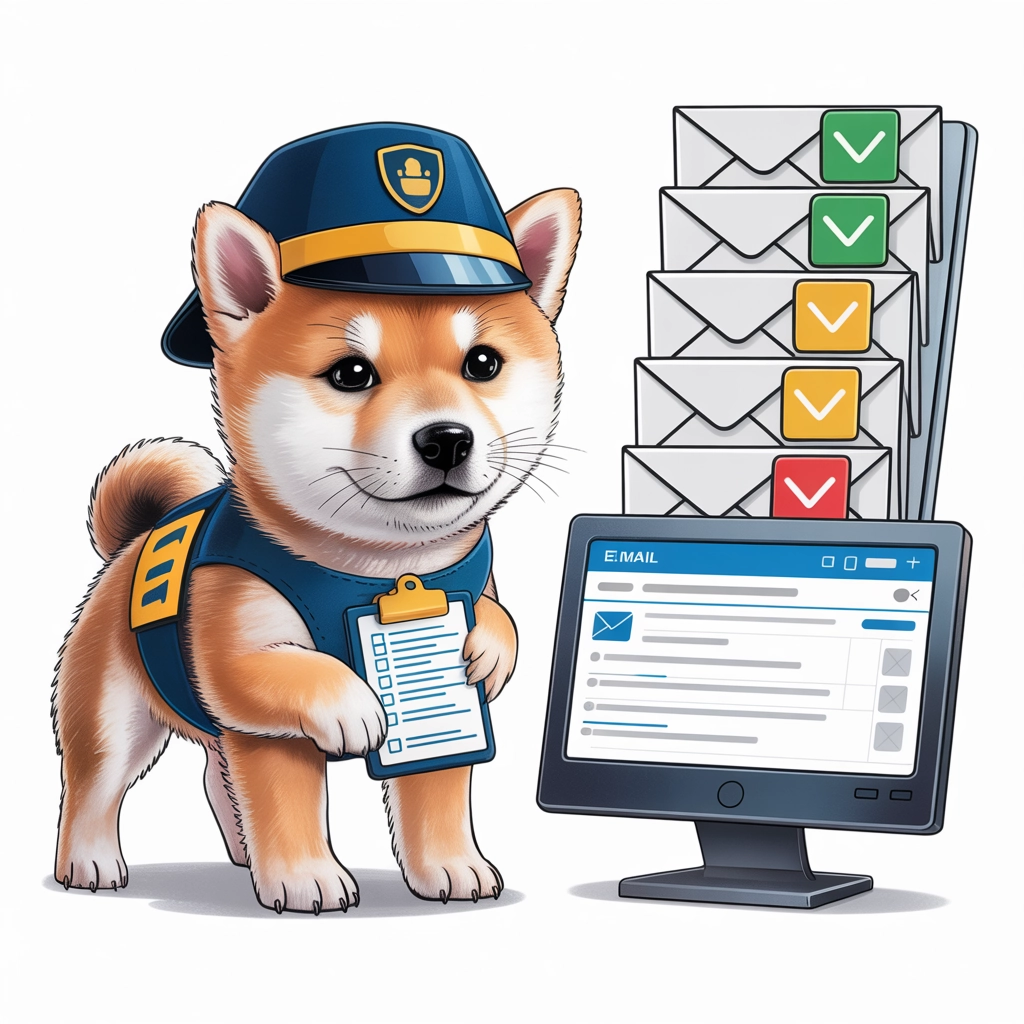Can You Trust AI to Automatically Respond to Your Emails?
Discover the promises, pitfalls, and best practices for using AI email assistants without compromising your professional reputation or data security.

 🐾
🐾Can You Trust AI to Automatically Respond to Your Emails?

In the fast-paced business world of 2025, your inbox is probably overflowing with emails demanding attention. The average professional now spends a staggering 3.1 hours daily processing emails—that's nearly 40% of the workday! No wonder AI email assistants have exploded in popularity, promising to reclaim those precious hours by automatically crafting responses on your behalf.
But should you really trust an AI to speak for you? Let's dive into the promises, pitfalls, and best practices for using AI email assistants without compromising your professional reputation or data security.
The Promise: What AI Email Assistants Can Deliver
Modern AI email tools have evolved dramatically from the simple "Smart Reply" buttons of yesteryear. Today's solutions can craft personalized, contextually appropriate responses that often pass the human test.
The benefits are undeniable:
Time savings: AI assistants can reduce email handling time by up to 60%, freeing you to focus on high-value tasks. For executives and managers processing 100+ emails daily, that's potentially 10+ hours reclaimed weekly.
Consistency: AI ensures your communication maintains a consistent tone and follows company guidelines, even when you're stressed, tired, or rushing between meetings.
24/7 availability: Critical emails can receive immediate responses outside business hours, preventing bottlenecks in global workflows and improving customer satisfaction.
Reduced decision fatigue: The average professional makes 35,000 decisions daily, with email responses accounting for hundreds of these choices. AI eliminates this cognitive burden by handling routine correspondence.

The Reality Check: Where AI Email Assistants Fall Short
Despite impressive capabilities, today's AI solutions have significant limitations that demand caution:
Nuance and context gaps: AI excels with straightforward exchanges but struggles with subtlety, sarcasm, cultural references, and reading between the lines. That innocent-looking response might miss crucial emotional undertones or implicit requests.
Personalization pitfalls: While AI can mimic your writing style, it lacks your specific memories, relationships, and shared experiences with colleagues. This can lead to awkward disconnects when responding to long-term contacts.
Security vulnerabilities: Email contains sensitive information, and feeding this data into AI systems creates potential exposure points. A 2024 study found that 11% of companies experienced data leakage through AI tools, with email automation being a primary vector.
Professional reputation risks: When AI gets it wrong—sending inappropriate responses, misunderstanding requests, or ignoring critical details—it's your reputation on the line. 67% of professionals report witnessing an "AI email fail" that damaged workplace relationships.
Finding the Right Balance: A Hybrid Approach
The smartest implementation isn't fully automated or completely manual—it's a thoughtful hybrid approach:
1. Categorize by Risk and Complexity
Sort your emails into three tiers:
Low-risk (AI handles independently): Meeting confirmations, receipt acknowledgments, simple information requests, and other routine correspondence where mistakes have minimal consequences.
Medium-risk (AI drafts, you review): Client communications, internal cross-departmental requests, and discussions involving moderate complexity where you can quickly review and approve AI-generated drafts.
High-risk (human-only): Negotiations, sensitive HR matters, crisis communications, strategic discussions, and anything involving legal concerns or significant financial implications.
2. Implement Guardrails and Review Processes
Even with this tiered approach, establish safety measures:
- Set character limits for fully automated responses (keeping them brief reduces risk)
- Create topic blacklists that always trigger human review
- Schedule regular audits of AI-sent communications
- Enable "training mode" where the AI learns from your edits to its drafts

Real-World Applications: Where AI Email Assistants Shine
Despite the cautions, several use cases demonstrate the true potential of AI email automation:
Customer service triage: AI can acknowledge receipt, categorize inquiries, and provide basic information while routing complex issues to the appropriate human specialist.
Meeting scheduling: Let AI handle the back-and-forth of finding suitable times, sending calendar invites, and following up with reminders or rescheduling requests.
Internal updates: Regular status reports, project updates, and routine announcements can be drafted by AI based on templates and updated information.
Follow-up sequences: AI can manage multi-touch follow-up campaigns, adapting subsequent messages based on whether previous communications received responses.
At Tailforce, we've seen companies reduce response times by 78% and increase customer satisfaction by 23% through thoughtful implementation of AI email assistants like our Kage persona for marketing teams and Kuno for executive support.
Security and Privacy: Non-Negotiable Considerations
Before implementing any AI email solution, ask these critical questions:
Data handling: Where is your email content stored, how long is it retained, and is it used to train the AI further?
Encryption standards: Are communications encrypted end-to-end, both in transit and at rest?
Access controls: Who can view the data within the AI provider's organization?
Compliance certifications: Does the solution meet relevant standards for your industry (GDPR, HIPAA, SOC 2, etc.)?
Data minimization: Can you limit what the AI processes to only what's necessary?
Remember that many jurisdictions now require disclosure when AI is involved in communications. Some organizations add a simple footer: "This email was drafted with AI assistance and reviewed by our team."

Best Practices for Responsible AI Email Automation
Follow these guidelines to maximize benefits while minimizing risks:
-
Start small: Begin with low-stakes internal communications before expanding to external audiences.
-
Establish clear policies: Document which communications can use AI and which require human handling.
-
Provide context: Brief your AI assistant with relevant background information before letting it draft responses.
-
Review regularly: Audit a sample of AI-generated communications weekly to catch and correct any issues.
-
Be transparent: Let recipients know when AI is involved in your communication process.
-
Maintain the human touch: Schedule regular direct communications with key relationships to preserve authentic connection.
-
Customize extensively: Invest time in training your AI to understand your specific communication style and company terminology.
The Future of AI Email Assistance
Looking ahead to 2026 and beyond, we can expect:
Emotional intelligence improvements: Next-generation AI will better detect sentiment and respond with appropriate empathy and tone.
Multimodal capabilities: AI will integrate email with other communication channels for seamless conversations across platforms.
Proactive assistance: Rather than just responding, AI will suggest communications you should initiate based on relationship patterns and business objectives.
Deeper personalization: AI will develop more sophisticated models of your relationships and communication preferences over time.
The Bottom Line: Trust, But Verify
Can you trust AI to automatically respond to your emails? The answer is: conditionally yes.
With proper implementation, clear boundaries, and appropriate oversight, AI email assistants can dramatically improve productivity while maintaining professional standards. The key is understanding that AI should complement your communication style, not replace your judgment.
The most successful users view AI as a collaborative partner rather than an autonomous replacement. They leverage automation for speed and efficiency while preserving human oversight for quality and authenticity.
By following the practices outlined above, you can harness the power of AI email assistance without sacrificing security, relationships, or professional reputation. The future of email isn't fully automated—it's augmented.
Want to learn more about implementing AI assistants in your workflow? Check out our email automation guide or explore how our AI personas can transform your business communications.
 🐾
🐾